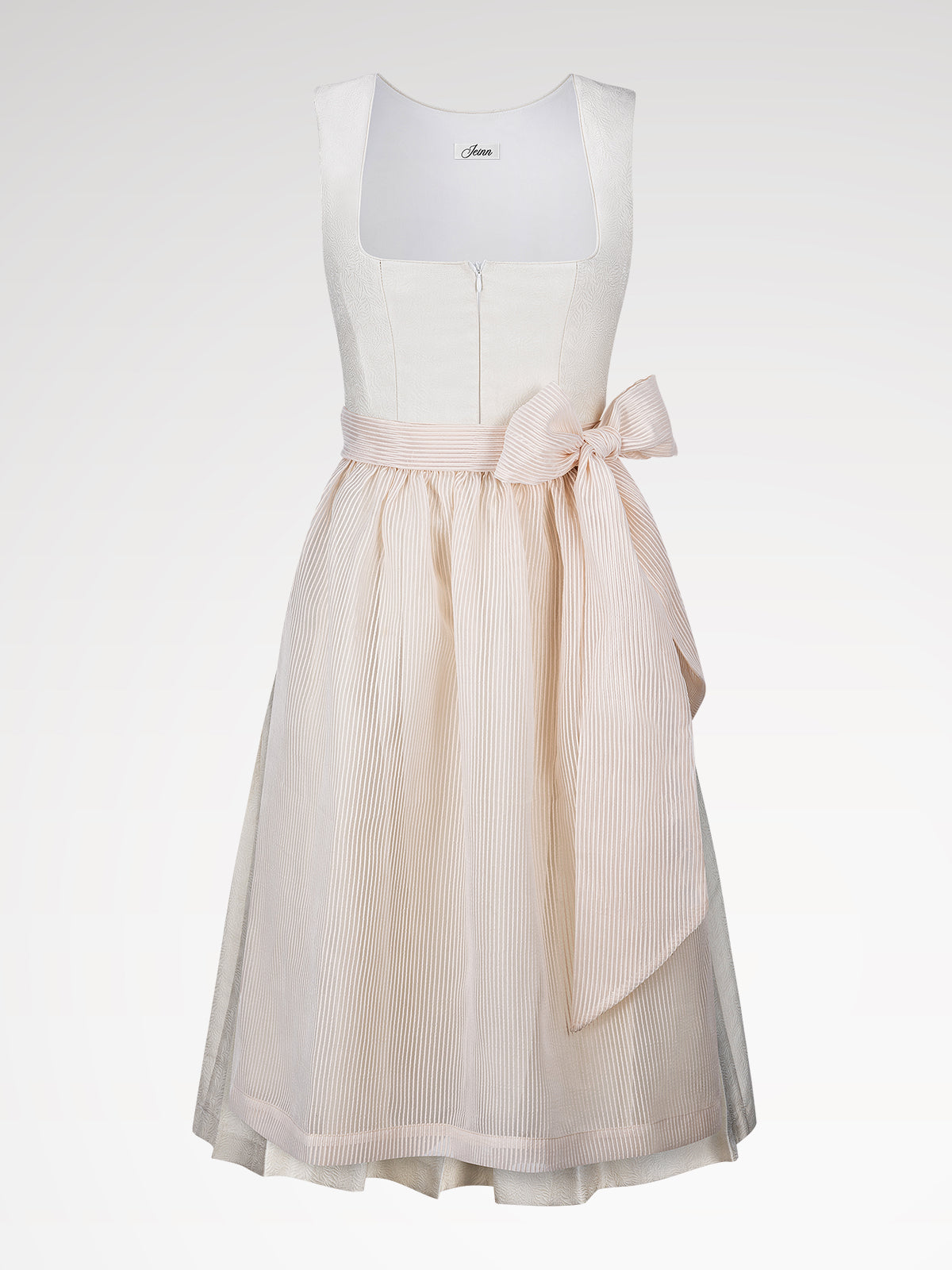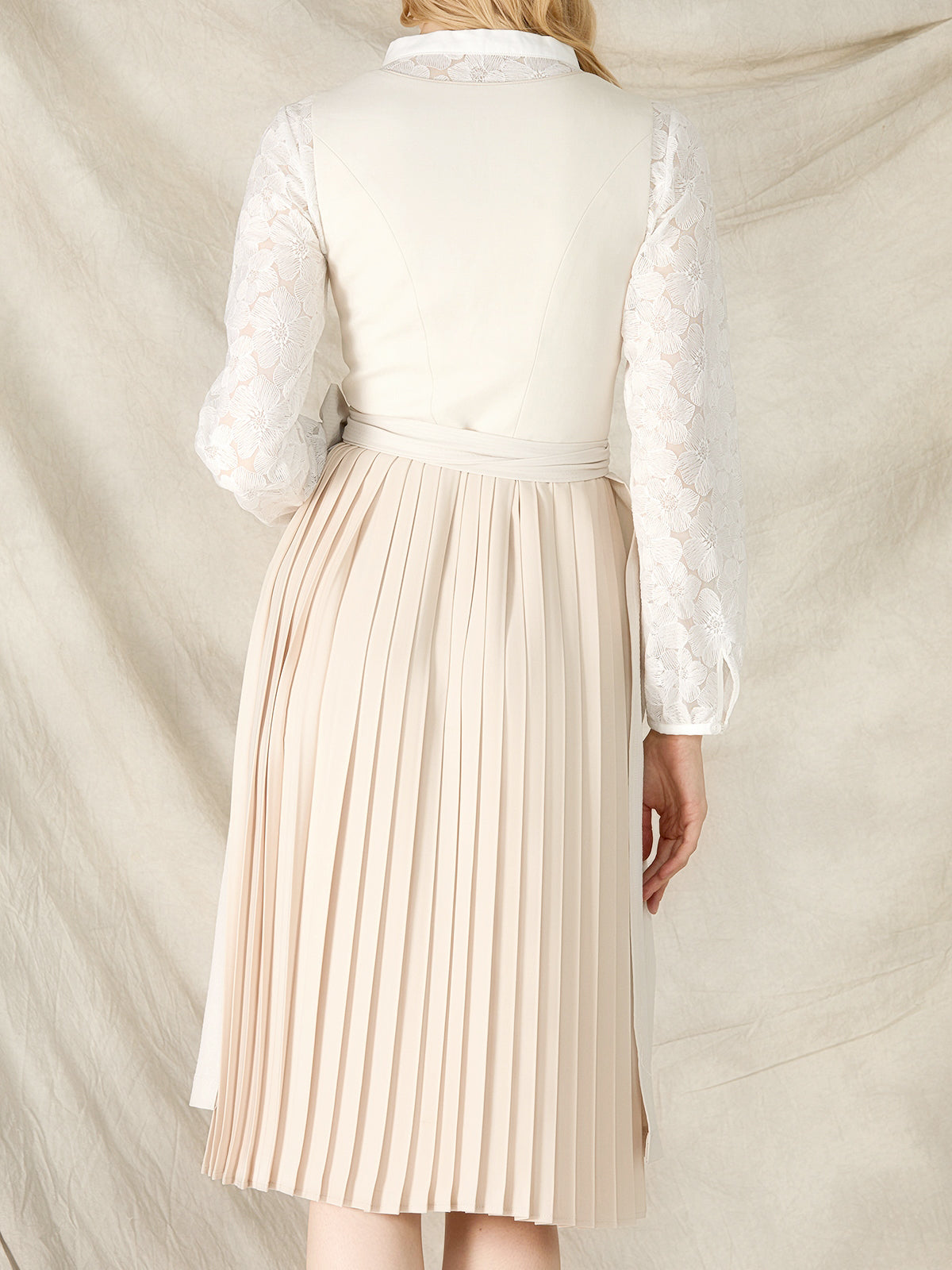Imagine an 18th-century alpine meadow: peasant women toiling in coarse linen, dark beige dirndls concealing dirt, and wide skirts allowing for movement. This was the birth of a dress that now shines on Prada catwalks. Its evolution reflects not only fashion history but also social revolutions.
The origins: functionality over form (17th-18th centuries)
The dirndl originated as a “dirndl dress” (maid’s dress) in the Alpine region. Made of robust linen or hemp, simple dirndl beige or Earthy long-sleeved dirndl versions for cool days. Key details:
- Practical cuts: Wide sleeves protected from the sun, reinforced shoulders carried loads.
- Symbol of class: As a peasant and maid's dress, it marked social classes – noblemen wore silk, not linen.
It wasn't until the Romantic movement of the 19th century that the "charm of the rural" was discovered. Nobles adopted the dirndl as a holiday fashion—the starting point of its stylization.
The Aristocratic Metamorphosis: From the Field to Festive Costume (19th Century)
The first luxury transformation took place with Alpine tourism:
- Material revolution: Cotton satin, silk brocade, and velvet replaced hemp. Pastel shades like light beige dirndls signaled status. .
- Rococo influences: Waists were cinched, necklines were emphasized. The apron transformed from a protective garment into a decorative element—embroidered with gold thread.
- Variety of lengths: In addition to ankle-length models, the first dirndl midi saleable versions for urban walks were created.
Instrumentalization and Resistance: The 20th Century
In the 1930s, the Nazi regime misused the dirndl as an "Aryan cultural asset." It was uniformed:
- Politicized cuts: Colors and patterns were regulated; long-sleeved dirndl models served as "popular" propaganda.
- Subversive elegance: Designers like Lola Paltinger resisted this – she smuggled silk appliqués into dirndl beige tones to preserve individuality.
After 1945, the dirndl became a symbol of local ties. The economic miracle brought opulent versions: bodices decorated with sequins and waist-accentuating dirndl midi sale-Cuts for dance parties.
Prada's Haute Couture Coup: Dirndl Meets Postmodernism (2019)
Miuccia Prada’s Spring/Summer 2019 collection deconstructed dirndl codes with ingenious precision:
- Silhouette quotes: Tailored bodices became asymmetrical crop tops, voluminous skirts became tulle layers .
- Material alchemy: She replaced traditional linen with technical nylons – a long-sleeved dirndl made of shimmering mesh shook up the functional history.
- Color dialogue: A beige dirndl made of cotton crepe contrasted with neon-red apron ribbons—a homage to the tension between tradition and rebellion.
This collection proved: The Dirndl is not a folkloristic relic, but a Design language with global grammar.
The Blue Hour of Modernity: Why Beige and Midi Are Triumphing Now
Today, three archetypes define the contemporary dirndl cosmos:
-
Dirndl Beige: The new neutrality
- Why it works: Beige has a luxuriously understated feel—ideal for urban events. A beige dirndl in organic cotton velvet combines eco-consciousness with minimalism.
- Styling tip: Combine it with a black leather apron for a contrasting “Munich Noir” look.
-
Dirndl Midi Sale: Sustainability meets pragmatism
- The length revolution: Knee-length dirndl midi sale models allow for mobility – perfect for festival tents or office events. Secondhand platforms like Vinted offer historic pieces at 60% off.
- Eco-chic: Upcycling designers transform grandma's long-sleeved dirndls into modern midi versions – resource conservation with a genealogy bonus.
-
Long-sleeved dirndl: The timeless icon
- function &Shape: Originally created for cool Alpine evenings, long-sleeved dirndls are now a winter savior at markets. Lace sleeves or brocade fabrics elevate them into the evening wear category.
- Investment tip: A long-sleeved dirndl made of recycled cashmere lasts 30 years – the alternative to fast fashion.
The future: technology meets tradition
The next stage of evolution is already visible:
- Digital tailoring: Apps like DirndlConfigurator allow virtual fitting of dirndl beige fabrics with personalized bodice embroidery.
- Circular Fashion: Brands like AlpenHerz offer rental systems for dirndl midi sale models – after 10 wears, they are recycled into new yarns.
- Climate adaptation: Self-cooling long-sleeved dirndl-Textiles with solar threads are under development – tradition becomes high-tech.
Epilogue: Why the Dirndl is immortal
From field smock to Prada icon, the dirndl transcended class barriers, dictatorships, and fast-fashion cycles. Its secret? A unique balance:
- Craftsmanship at its core: Every hand embroidery tells of centuries-old know-how.
- Democratic elegance: Whether it's a midi dirndl sale find for €50 or a luxury beige dirndl for €2,000 – it flatters every figure and every budget.
- Cultural bridge: A long-sleeved dirndl carries Alpine heritage into Tokyo clubs or New York galleries – without losing its soul.
When Miuccia Prada deconstructed dirndl silhouettes in 2019, she proved that true tradition isn't a museum exhibit. It's a dialogue—and the dirndl continues this dialogue with each era. Whether you choose a beige dirndl for the city, a bargain midi dirndl for the Oktoberfest, or a long-sleeved dirndl for winter festivals, you're always wearing a piece of living history that's just beginning to write its most radical chapters.





Leave a comment
This site is protected by hCaptcha and the hCaptcha Privacy Policy and Terms of Service apply.